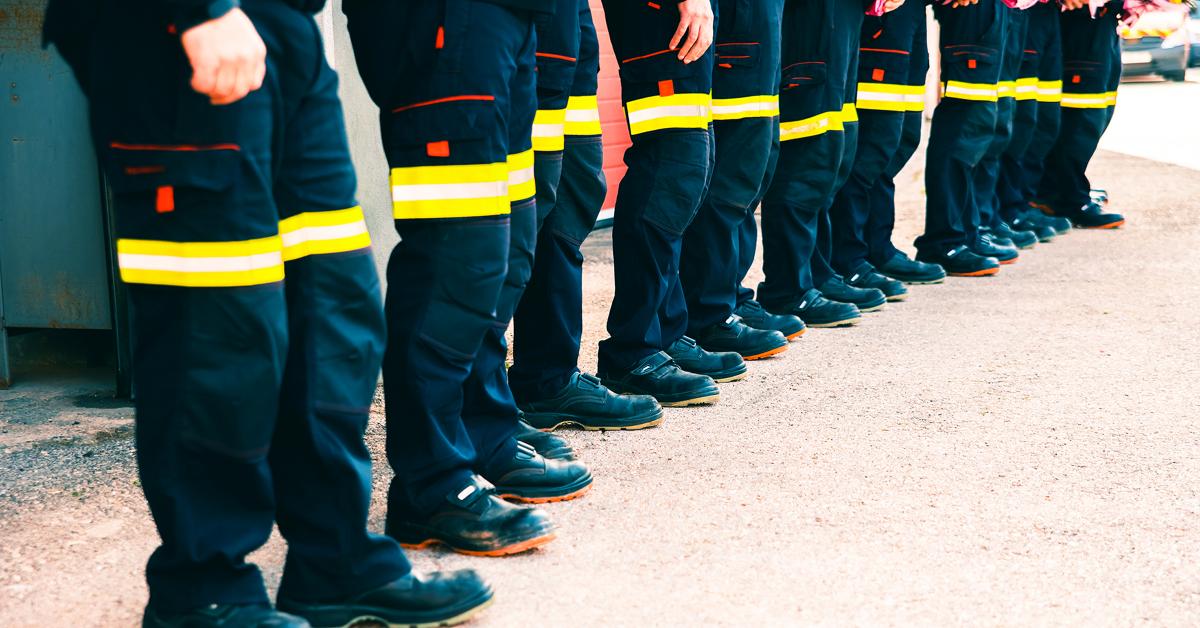WOODSTOCK, Ill. — Keeping your safety workwear and uniforms clean and free of contaminants is essential. Not only will this help you stay safe on the job, but it will also prolong the life of your clothing.
However, when washing safety gear, it’s essential to follow specific tips to ensure that the clothing is not damaged and that you remove all contaminants.
The process of washing workwear is different from washing regular clothing. Let’s look at some tips for washing your safety workwear and uniforms.
RISK INVOLVED WITH COMMERCIAL LAUNDRY TASKS
Commercial laundry tasks aren’t without risk. In fact, there’s a good chance you or someone you know has had an accident while doing laundry. Some of the most common risks include:
Fires. Lint buildup in dryers is a leading cause of house fires. Be sure to clean the lint trap after every load of laundry.
In addition, don’t overburden the dryer by trying to dry too much clothing at once. Doing this will significantly increase the time it takes for the clothing to dry, which could lead to lint buildup.
Injuries. Wet floors and laundry carts are common causes of slips and falls. Be sure to wipe up any spills immediately and use caution when walking around wet areas.
In addition, be careful when moving laundry carts as they can be heavy and difficult to control, whether in wet or dry areas.
Contaminants. Contaminants in laundry rooms include bacteria, mold and mildew. Be sure to wash your hands after handling dirty laundry and use gloves when possible.
In addition, don’t forget to clean the washing machine and dryer regularly.
Chemical burns. Many laundry detergents contain harsh chemicals that can cause skin irritation or even burns. Be sure to read the labels on all laundry products and follow the instructions carefully.
In addition, wear gloves when using any chemical cleaner. You can also use other personal protective equipment (PPE) such as aprons, safety glasses, and face masks to protect yourself from harmful chemicals.
WASHING TIPS FOR COMMERCIAL LAUNDRY CARE
If you want to keep your safety workwear and uniforms in good condition, it’s essential to follow some specific tips. These tips can help you avoid accidents and keep your clothing clean and contaminant-free.
Select the right wash cycles. One of the most important things to consider when washing safety workwear is the fabric the clothing is made from. Doing this will determine what wash cycle you should use.
For example, if you’re washing a uniform made from 100% cotton, you’ll want to select the delicate cycle.
However, if you’re washing synthetic fabric, you may be able to use a regular cycle. Remember that you may need to test a small area of the material first to ensure that it can handle the selected cycle.
You don’t want to damage the material by using the wrong cycle.
Use of chemicals. As mentioned earlier, many laundry detergents contain harsh chemicals. These chemicals can cause skin irritation or even burns. That’s why it’s essential to read the labels on all laundry products and follow the instructions carefully.
In addition, you should wear gloves when using any chemical cleaner.
Doing this is especially important when it comes to workwear and uniforms. Since you use these garments in hazardous environments, they can become contaminated with dangerous chemicals. By using gloves, you can help protect your hands from these contaminants.
Right washing and drying temperature. The temperature at which you wash and dry your safety workwear and uniforms is also important to keep in mind.
You’ll generally want to wash these garments in cool or warm water. Hot water can damage some types of fabric, and it can also set stains.
As for drying, it’s best to use the low heat setting; doing this will help prevent shrinkage and damage to any customized uniform design.
For example, if you’re washing a pair of 100% cotton pants, you’ll want to wash them in cool water and dry them on a low heat setting. If not, you could end up damaging the pants.
In addition, you should avoid using fabric softeners when washing safety workwear and uniforms. These products can leave a residue on the fabric that can attract dirt and other contaminants.
Follow instructions from the manufacturer. When washing safety workwear and uniforms, it’s always best to follow the instructions from the manufacturer.
These instructions will consider the specific fabric of the clothing and the type of environment where you wear the garments. As a result, they’ll provide you with the best guidelines for washing and caring for your garments.
By following these instructions, you can help ensure that your clothing lasts as long as possible. You can find the manufacturer’s instructions on the garment’s care label; read it carefully before washing or drying your safety workwear and uniforms.
Use of PPE. Finally, it’s important to remember that you should always wear PPE when handling or laundering safety workwear and uniforms. The reason is that these garments can become contaminated with hazardous materials. By wearing PPE, you can help protect yourself from these contaminants.
Some of the most common items of PPE include gloves, aprons and facemasks. If you’re unsure about what type of PPE to use, you should consult with your employer, and they’ll be able to provide you with the proper guidance, mainly as you deal with different types of safety workwear and uniforms.
CONCLUSION
As you can see, there are a few things to remember when laundering safety workwear and uniforms.
Following these tips can help ensure that your garments are properly cleaned and cared for.
Following proper washing tips will help extend the lifespan of your safety workwear and uniforms while keeping you safe during wear.
Be sure to consult the care label of your garments for specific instructions. And, if you’re unsure what to do, don’t hesitate to ask your employer for guidance.
Have a question or comment? E-mail our editor Matt Poe at [email protected].
























































































































































































































































